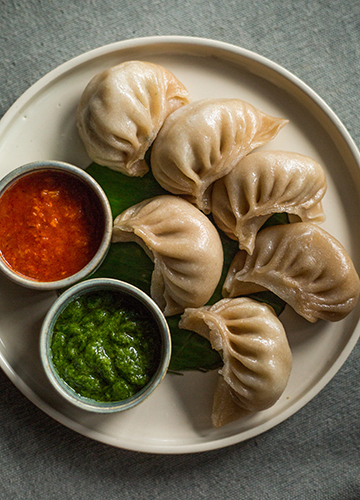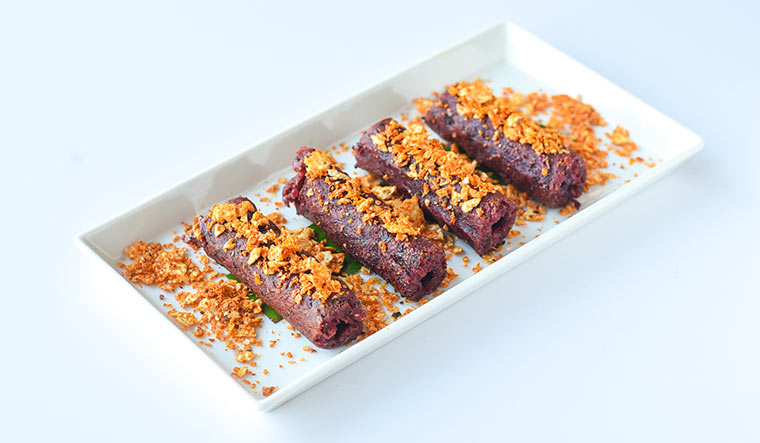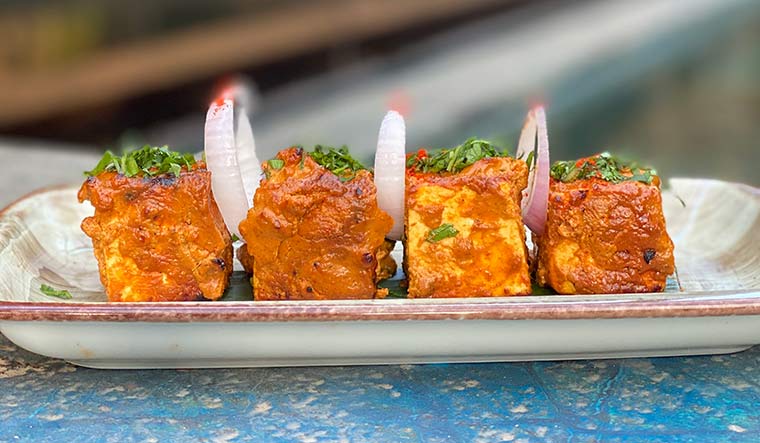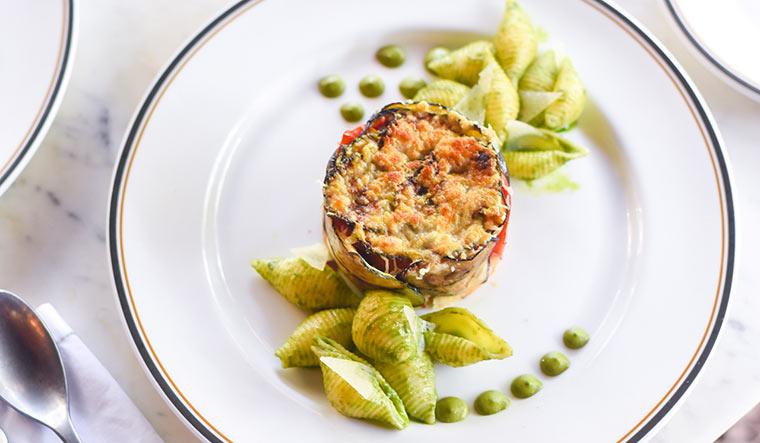An increasing awareness of health and the environment, and compassion for animals are goading many (especially youngsters) to go for the greens. Some see it as a good way to detox. Whether you are helping your waistline or the planet by eating less meat, the fact remains that vegetarians today are much better served than they were before.
Going green is easier
Turning into a vegetarian has become more appealing and accessible, thanks to the year-round availability of fresh produce, more vegetarian dining options and the growing culinary influence of cultures with largely plant-based diets. “We definitely see the demand for vegetarian food going up in our restaurant. There has been a lot of awareness about plant-based living through healthy lifestyle publications and documentaries like The Game Changers which advocate a plant-based lifestyle for health and environmental reasons,” says Rebekah Blank, brand head at Fabcafe by Fabindia. At Yauatcha, the Cantonese dim sum teahouse, the number of vegetarian dishes sold in 2019 as compared with 2018 has gone up by 30 per cent. “A large number of Cantonese people are Buddhist and hence Cantonese cuisine has traditionally used vegetarian ingredients. Since inception, we have been importing a lot of native Asian ingredients like taro root, different variety for mushrooms and lotus root that work very well here, are good meat substitutes and are widely used in Cantonese food,” says Abhishek Bindal, vice president of operations at Ka Hospitality, the company that operates Yauatcha, Hakkasan, Nara and CinCin.
A vegetable-rich, meatless diet can be extremely interesting and flavourful. There are ample meatless dishes in every type of cuisine, so you’ll never be left wanting variety. The ease of cooking also plays a major role. Vegetarian meals are generally easy to rustle up. Plus, you can make any of your favourite nonvegetarian dishes by substituting with meat alternatives. At Fabcafe, vegetarians are served a Quinoa Kathal Biryani where the kathal (raw jackfruit) creates a nice vegetarian meaty texture while the quinoa spikes up the protein intake for vegetarians. Momos crafted with jackfruit flour is another hotseller. There are lots of vegetarian cookbooks available as well. “Food taste is simply not animal-protein-dependent. There are herbs, spices, cooking methods, sauces and marinades that contribute towards aroma, taste and flavour. The correct roasting of spices, the addition of herbs at the right time, the cooking of sauces, using vegetable stock or vegetable liquor as it is referred to will all aid in creating a delicious vegetarian dish,” says Prashant Issar, co-founder, Ishaara a modern Indian cuisine restaurant in Mumbai.
Chefs to the rescue
Years ago, being a vegetarian was not all roses. Dining at a restaurant for vegetarians meant eight types of paneer and an equal number of potato dishes or a wilted salad made from discarded lettuce and tomatoes that didn’t look pretty enough to go on a cheeseburger. But in recent years, things have changed drastically.
As an increasing number of people adopt plant-based diets around the world, restaurants and chefs are eager to cater to the growing trend by creating vegetarian menu options. Forget paneer and potatoes. Enter avocado, zucchini, broccoli, leek, cherry tomato, asparagus, quinoa, chia seeds, exotic cheese and herbs. Vegetarian cooking is enjoying a makeover, prompting meat-eaters to put down their steak knives. “As a chef I started noticing a shift to vegetarianism some years back. It picked up momentum in the last few years,” says partner and chef Rakesh Talwar who takes many inventive leaps with his vegetarian menu at Vice Global Tapas Bar. “Plant-based dishes can be enhanced with umami flavours, sauces like siracha, almond milk and techniques like smoking. At Vice I simply blanch edamame (young soya beans) and sprinkle it with yuzu which gives it a slight citrusy flavour and enhances the whole eating experience. Paneer tikka gochujang is another of my favorite experiments, where gochujang a Korean fermented chili paste is paired with paneer and cooked in the tandoor. Even the Koreans wouldn’t have thought of this!” says the chef.
Yauatcha, which has an extensive vegetarian menu, is another place that’s pushing the culinary envelope. Their truffle and edamame dim sum combine edamame with the widely used modern-age ingredient—truffle. “The slight addition of truffle oil, enhances the taste of the edamame giving the dim sum a very earthy, nutty, umami flavour which is a big hit at our restaurant,” says Bindal. Masala Library Mumbai, the culinary laboratory of Zorawar Kalra, does a fabulous take on a deeply comforting Indian staple—dal chawal—with the dal chawal arancini (panko fried dal chawal balls) served with tomato onion salsa. Farzi Café in Gurugram uses strong elements of molecular gastronomy to offer dishes like nimboo achar caviar and makhan wali kaali daal ka shorba. The idea is to not just create an equal choice for the customers with vegetarian leaning, but also make it exciting.
For chef Keith Lawrence of The Terrace, it’s easy to be veg-inspired in these times when the markets and grocery stores are overflowing with gorgeous produce such as purple cabbage, black rice, avocado, black quinoa, habanero and cashew cheese. Vegetarian meals are the perfect way to put it all to delicious use. His dish orange cheddar stuffed tandoori mushrooms is one of the bestsellers at the restaurant. “Imagine the burst of flavours when the salty cheddar melts in the tandoor and combines with the fiery tandoori masala and meets with the green chutney on the plate?” he asks. At Ishaara, vegetarians are treated to the lavish and extravagantly plated tandoori broccoli served on a bed of creme fraiche a sour cream. “The process takes about 48 hours but the sourness and chill of the creme fraiche balance the pungency of the chili oil marinated broccoli,” explains Issar. Another tantalising dish the paneer dori kebab (a lamb dori alternative) involves a malai paneer pate grilled on a wooden skewer with a thread running along the length, which is pulled at the table to unzip the dish onto the plate.
Even the humble carrot gets a star treatment at Soufflé S’il Vous Plait a French restaurant and the latest addition to South Mumbai’s gastronomical scene. Simply titled ‘Carottes’, this entrée features the humble root vegetable done in six ways—carrot biscuit using a dehydrated carrot powder instead of regular flour, carrots cut very thinly and kept on ice and folded with basil pesto, cooked carrots glazed with butter and ginger, a base of carrot and cumin puree and finished with crispy carrot chips seasoned with a carrot vinaigrette.
So the bad old days of the vegetarian restaurant scene are over. Instead, the city’s best restaurants are eager to create something classy and a bit different for those wanting to feast without flesh. In fact, the whole scene might even convert a dedicated carnivore or two.
Change ahead
Recent convert to the green brigade? These simple tips may help
❖ Consider making the change gradually, for example, over a month.
❖ Get some tips and recipes from vegetarian websites or a nutritionist.
❖ Make a weekly shopping and meal plan.
❖ Focus on a variety of meat-free dishes that provide sufficient proteins, so that you do not end up overeating. Vary the diet with whole grains, fruits, vegetables, legumes, nuts and so on.
❖ Italian, Greek and Middle Eastern foods offer many meatless options such as pasta primavera, pasta marinara, falafel, couscous, minestrone soup, eggplant dishes, Greek salads and tabbouleh.
❖ Most restaurants can make vegetarian modifications to menu items by adding vegetables, tofu, beans or pasta in place of meat.
❖ Vegetables high in umami include asparagus, tomatoes, seaweed, peas, corn and onions. Soyfoods, including tofu and edamame and seaweed are also good places to find umami.
Why go green?
Whether you’re a part-time vegetarian or someone who treats it as a lifestyle, there are various reasons to be vegetarian, health being primary. Plant-based eating has been linked with all sorts of health benefits, including a lower risk of type 2 diabetes, hypertension, and coronary heart disease.
Traditionally, research into vegetarianism focused mainly on potential nutritional deficiencies, but in recent years, the pendulum has swung the other way, and studies are confirming the health benefits of going meat-free. Nowadays, plant-based eating is recognised as not just a way to reduce the risk for many chronic illnesses but also nutritionally sufficient. According to Anushka Baindur, senior dietician, Fortis Hospital, Bengaluru, cutting out nonvegetarian food completely from our meals will not affect us much if we substitute the nutrient we get from nonvegetarian food with vegetarian options. “Eating a cereal-pulse combination, for example, rice and dal, is an excellent example of complete protein. The body’s iron needs can also be met by including greens, dried fruits and nuts, ragi, rice flakes, pumpkin seeds, whole pulses like rajma and green moong. Including vitamin C rich food in combination with iron-rich food enhances the latter’s absorption in our body. Vitamin B12 is present to some extent in dairy products and fortified foods, but if there is a deficiency, it has to be corrected with a supplement.”








